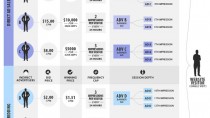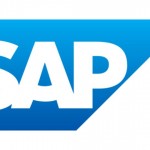プログラマティックバイイングとは
As the data-driven, digital ecosystem expands, so are the number of people looking to understand its intricacies.
In an effort to bring transparency to the many industry terms and buzzphrases spinning ’round, AdExchanger asked several executives their thoughts on the following:
“What is programmatic buying?”
Click below to read their responses:
Andy Cocker, COO/ Co Founder, Infectious Media
“Programmatic Buying describes online display advertising that is aggregated, booked, flighted, analyzed and optimized via demand side software interfaces and algorithms. While it includes RTB it also includes non RTB methods and buy types such as Facebook Ads API and the Google Display Network. Programmatic also implies the use of multi sourced data signals to inform targeting and optimization decisions. An increasing share of online display advertising is moving towards programmatic due to its inherent efficiency (both workflow and performance). The majority of inventory available via programmatic is non-guaranteed, auction traded during the ad call although we expect to see more guaranteed reserved ‘premium’ inventory available in the future. Although ‘Programmatic’ suggests little or no human intervention, algorithmic optimisation can only do so much. Smart macro optimization by analytical ‘traders’ can amplify programmatic performance significantly.”
“Generally, programmatic buying is similar to programmatic stock trading insofar as buying happens as the result of a computational proxy bidding on behalf of human masters.
I define programmatic buying as the application of artificial intelligence and big data to:
- Bid on an advertising inventory source (e.g. a 300×250 IAB standard ad offered by Yahoo!, a 30 second pre-roll video from YouTube.com, a Facebook ad)
- Through an advertising exchange
- In real time
- For the opportunity to:
- show one specific ad
- to one anonymous consumer
- in one context
- on one device
Within programmatic buying, I differentiate between
- human programmatic buying (HPB)
- artificial intelligence buying (AIB)
An example of HPB would be to bid a fixed amount of $6.00 on any visitor that’s been on an advertiser’s website in the last 30 days.
An example of AIB would be to autonomously score each impression using predictive analytics and bid a dynamic amount based on a complex formula involving thousands of factors, including whether the visitor had been on the advertiser’s website in the last 30 days, the weather, geography, time of day, etc. The bidding formula itself and the subsequent optimization decisions have been derived by algorithmic processes, versus being specified by human input.”
John Nardone, CEO, [x+1]
“Programmatic buying is a subset of programmatic marketing. Programmatic marketing uses real time systems, rules and algorithms to automate the delivery of data driven, targeted and relevant experiences to consumers as they interact with a brand’s many touch points. The experiences include targeted offers, messages, content or ads across paid, owned and earned channels. The best programmatic marketing recognizes the consumer as he moves between channels and touch points, so that each interaction informs the next. Owned touch points include the marketer’s website, mobile apps, Facebook page and email. Earned touch points are those created by the consumers themselves. Programmatic buying is the paid part of programmatic marketing: the automated purchase of data driven, targeted ads whether they be online display, mobile or video ads. Programmatic buying can be accomplished through a DSP, but programmatic marketing requires a more comprehensive platform that can execute complex logic across a variety of systems, including website content management, email, call center enabled chat, mobile apps, and CRM systems.”
Philip Smolin, SVP of Market Solutions, Turn
“In the digital advertising world today, marketers are faced with an overwhelming level of inventory and audience fragmentation. Each customer interaction happens on a different device, different media channel and at a different time during the lifecycle of brand engagement. Data is generated throughout. Programmatic Buying helps bring order to this fragmentation. It enables marketers to consolidate customer interactions across multiple channels into a single dashboard, and then use that dashboard to develop a single, overarching strategy about how to best engage (and continue the conversation) with those audiences. Along the way, it helps marketers use data to increase advertising effectiveness by assigning a value to every impression. – and then uses that value to ensure the marketer doesn’t waste budget by advertising to prospects who will never have an interest in their brand, products or services.
But the benefits of Programmatic Buying are not limited to the buyer. The improved effectiveness it delivers for the advertiser also translates into increased relevance for the consumer and greater revenue for the publisher. And in a world where consumers want high quality news, professional content and open forums for social interaction to be subsidized by advertising, that’s a very good thing.”
Joe Zawadzki, CEO, MediaMath
“The use of technology to automate processes and the use of math to improve results.
It is the future of marketing, available now.
from:http://www.adexchanger.com/online-advertising/define-programmatic-buying/












